-
New micro helicopters for search and rescue missions
New micro helicopters have a diameter of about fifty centimeters, weigh only 1,500 grams; they do not rquire GPS or remote control to navigate; they are designed to maneuver in tight or even enclosed spaces, and to detect and fly around any obstacle; possible uses could include protection or rescue missions, and they are ideal for flying over disaster areas and giving a picture of the situation from the air or locating victims
-
-
Ion stream to clean up Earth orbit, deflect asteroids
One of the legacies of the space age is an ever-more-crowded near-Earth orbit, where all manner of long-abandoned human-made objects loiter, posing danger to newer space platforms; scientists want to develop a magnetized-beam plasma propulsion device which would be deployed in Earth orbit and which would use a focused ion stream to push dead satellites and other debris toward Earth’s atmosphere, where they would mostly burn up on re-entry; the device could also be used to deflect menacing Earth-bound asteroids hurtling toward Earth
-
-
DARPA offers $2 million in prizes for Robotic Challenge winners
DARPA is seeking hardware, software, modeling, and gaming developers to link with emergency response and science communities to design robots capable of supervised autonomous response to simulated disaster
-
-
Planetary exploration vehicle for earthly search-and-rescue missions
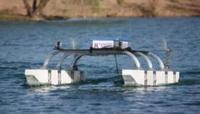
A researcher develops a NASA-sponsored autonomous lake lander for the purpose of exploring lakes on distant planets; this mission is many years in the future; in the meantime, the vehicle is ready to deploy on missions related to defense and security, such as harbor surveillance and cleanup operations of littoral munitions dumps and mines; it is also ideal for search-and-rescue operations in oceans, lakes, and hazardous environments, as well as for environmental research projects
-
-
Robot for shipboard firefighting
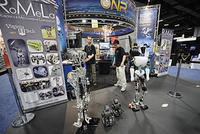
In both war and peace, fire in the shipboard environment is serious and frequently results in excessive damage and high repair costs because the fire is not detected or controlled adequately; researchershave developed a humanoid robot that could fight fires on the next generation of combatants
-
-
DARPA sponsors development of deep-sea surveillance robot
New Unmanned Underwater Vehicles (UUVs) to address Anti-Submarine Warfare (ASW) surveillance needs over large, operationally demanding areas
-
-
Snake-emulating search-and-rescue robot
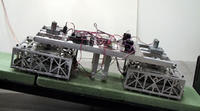
An all-terrain robot for search-and-rescue missions must be flexible enough to move over uneven surfaces, yet not so big that it is restricted from tight spaces; it might also be required to climb slopes of varying inclines; researchers say the solution would be a search-and-rescue robot which emulates the locomotion of a certain type of flexible, efficient animals: snakes
-
-
Robots to climb and assemble structures, making construction safer
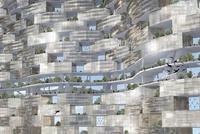
In the near future, armies of robots could nimbly be crawling up towers and skyscrapers to make repairs, so humans do not have to; the design of the truss pieces, which have ridges and specially designed locks so the robot can manipulate them, is as important as the robot itself, and researchers express the hopes that in the future such robot-friendly building components would be standardized for widespread use
-
-
Physicists predict when brittle materials fail
It does not happen often, but structures like bridges, airplanes, and buildings do fail, sometimes catastrophically; what are the odds, and how can it be prevented? Researchers just published new theoretical insights into the probability of structural failures, based on hundreds of thousands of computer simulations
-
-
Middle school robotics team develops solution to food poisoning
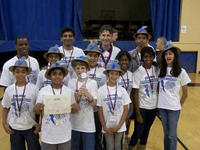
A group of eight middle school students in California has developed an electrolyzed water vending machine that can cheaply and effectively reduce food contamination
-
-
Four-legged robot carries troops’ load
The increasing weight of military equipment has a negative impact on soldiers’ readiness and effectiveness; reducing the load on dismounted soldiers has thus become a major point of emphasis for defense research and development; the Legged Squad Support System (LS3) robot follows squad members through rugged terrain and interact with them in a natural way, similar to the way a trained animal and its handler interact, while carrying 400 lbs. of squad’s gear
-
-
Running robots for hard-to-reach places
A large fraction of the Earth’s surface remains inaccessible to conventional wheeled or tracked vehicles, while animals and humans traverse such terrain with ease and elegance; scientists are working to develop search-and-rescue robots which emulate animal or human walking, thus making them more capable of saving people in hard-to-reach places
-
-
Students compete in zero-gravity robotic competition
Two hundred high school students were on the campus of Massachusetts Institute of Technology (MIT) on Monday for a competition to program miniature satellites aboard the International Space Station
-
-
Shrew whiskers inspire robot design
The Etruscan shrew is nocturnal, relying on its whiskers to find, track, and capture its prey; the efficiency of this tiny creature has inspired scientists to look at ways of replicating the shrew’s whiskers to enable robots to find their way around without the use of vision
-
-
New robot for search-and-rescue missions
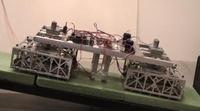
Scientists say the best way to design a new machine is to emulate the locomotion of a certain type of flexible, efficient animal
-
- All
- Regional
- Water
- Biometrics
- Borders/Immig
- Business
- Cybersecurity
- Detection
- Disasters
- Government
- Infrastructure
- International
- Public health
- Public Safety
- Communication interoperabillity
- Emergency services
- Emergency medical services
- Fire
- First response
- IEDs
- Law Enforcement
- Law Enforcement Technology
- Military technology
- Nonlethal weapons
- Nuclear weapons
- Personal protection equipment
- Police
- Notification /alert systems
- Situational awareness
- Weapons systems
- Sci-Tech
- Sector Reports
- Surveillance
- Transportation
Advertising & Marketing: advertise@newswirepubs.com
Editorial: editor@newswirepubs.com
General: info@newswirepubs.com
2010-2011 © News Wire Publications, LLC News Wire Publications, LLC
220 Old Country Road | Suite 200 | Mineola | New York | 11501
Permissions and Policies
Editorial: editor@newswirepubs.com
General: info@newswirepubs.com
2010-2011 © News Wire Publications, LLC News Wire Publications, LLC
220 Old Country Road | Suite 200 | Mineola | New York | 11501
Permissions and Policies
